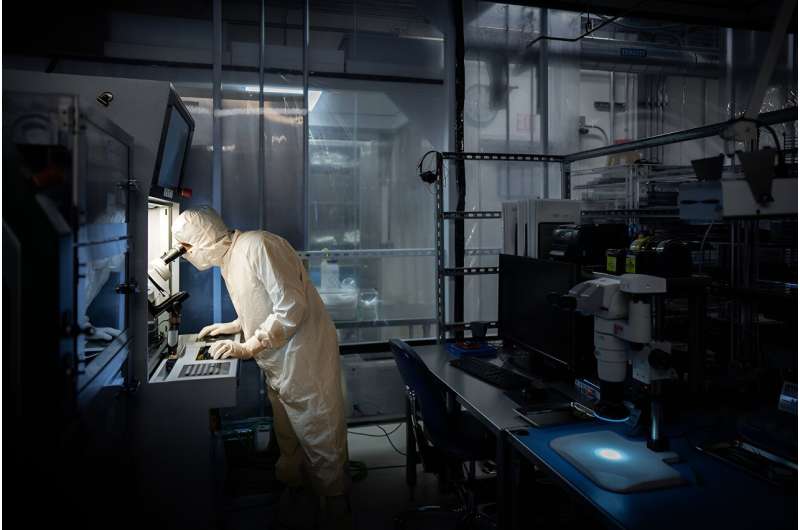This article has been reviewed according to Science X's editorial process and policies. Editors have highlighted the following attributes while ensuring the content's credibility:
fact-checked
trusted source
proofread
Bigger and better quantum computers are possible with new ion trap dubbed the Enchilada

Sandia National Laboratories has produced its first lot of a new world-class ion trap, a central component for certain quantum computers. The new device, dubbed the Enchilada Trap, enables scientists to build more powerful machines to advance the experimental but potentially revolutionary field of quantum computing.
In addition to traps operated at Sandia, several traps will be used at Duke University for performing quantum algorithms. Duke and Sandia are research partners through the Quantum Systems Accelerator, one of five U.S.
An ion trap is a type of microchip that holds electrically charged atoms, or ions. With more trapped ions, or qubits, a quantum computer can run more complex algorithms.
The Enchilada Trap can store and transport up to 200 qubits, an increase from the maximum of 32 in Sandia's previous version, the Roadrunner Trap. Both versions are produced at Sandia's Microsystems Engineering, Science and Applications fabrication facility.
According to Daniel Stick, a Sandia scientist and leading researcher with the Quantum Systems Accelerator, a quantum computer with up to 200 qubits and current error rates will not outperform a conventional computer for solving useful problems. However, it will enable researchers to test an architecture with many qubits that in the future will support more sophisticated quantum algorithms for physics, chemistry, data science, materials science and other areas.
"We are providing the field of quantum computing room to grow and explore larger machines and more complicated programming," Daniel said.
A forward-looking design
Sandia has researched, built and tested ion traps for 20 years. To overcome a series of design challenges, the team combined institutional knowledge with new innovations.
For one, they needed space to hold more ions and a way to rearrange them for complex calculations. The solution was a network of electrodes that branches out similar to a family tree or tournament bracket. Each narrow branch serves as a place to store and shuttle ions.
Sandia had experimented with similar junctions in previous traps. Stick believes the branching architecture is currently the best solution for rearranging trapped ion qubits and anticipates that future, even larger versions of the trap will feature a similar design.
Another concern was the dissipation of electrical power on the Enchilada Trap, which could generate significant heat, leading to increased outgassing from surfaces, a higher risk of electrical breakdown and elevated levels of electrical field noise. To address this issue, production specialists designed new microscopic features to reduce the capacitance of certain electrodes.
"Our team is always looking ahead," said Sandia's Zach Meinelt, the lead integrator on the project. "We collaborate with scientists and engineers to learn about the kind of technology, features and performance improvements they will need in the coming years. We then design and fabricate traps to meet those requirements and constantly seek ways to further improve."
Provided by Sandia National Laboratories




















